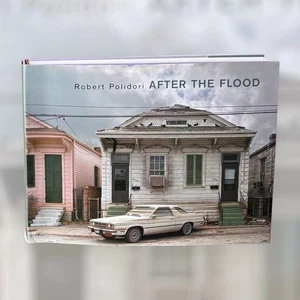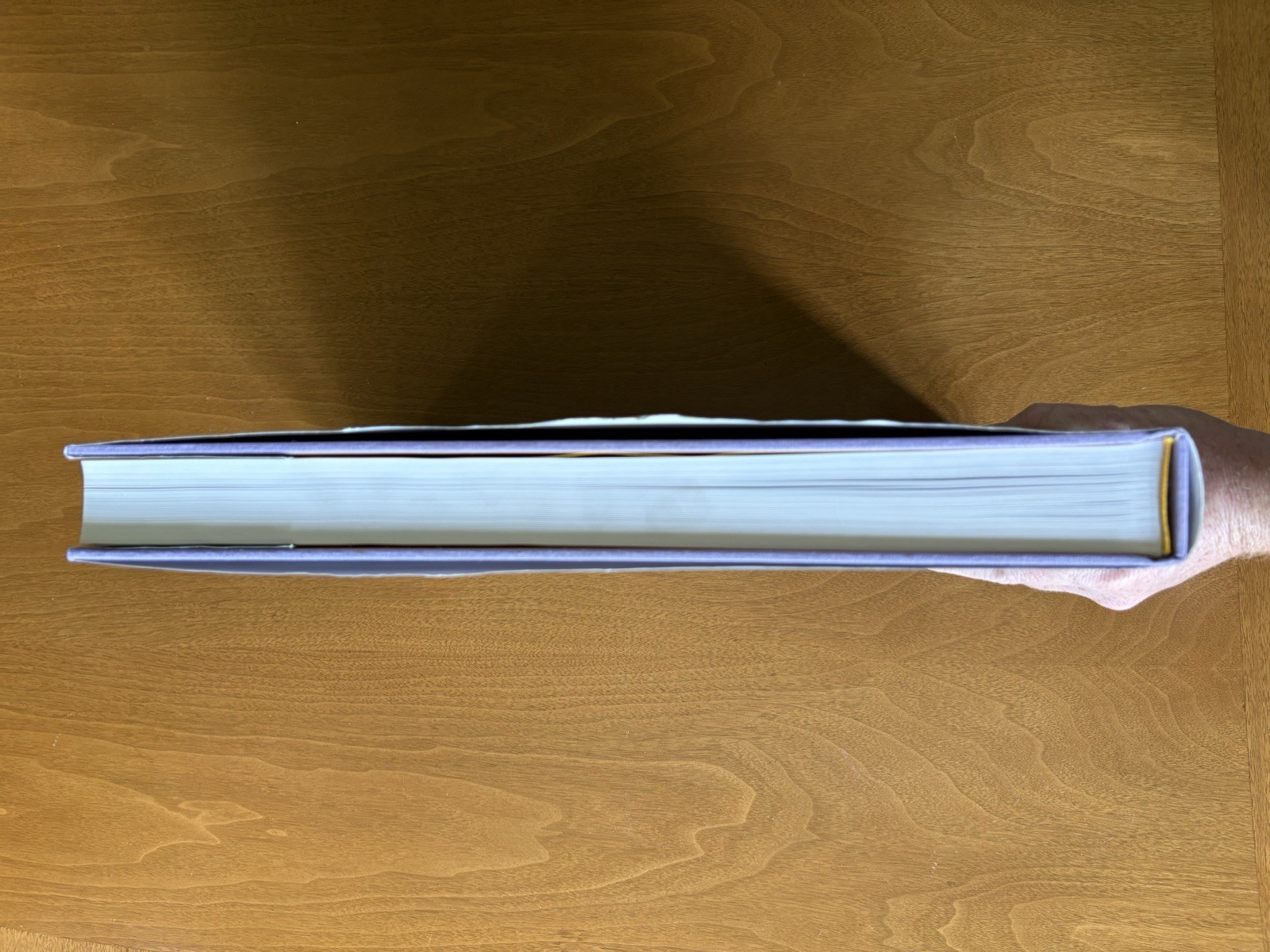Bild 1 von 12












Galerie
Bild 1 von 12












Robert Polidori: Nach der Flut von Steidl (2006, Hardcover)-
US $25,00
Ca.EUR 21,62
Artikelzustand:
“Good++ condition. No writing or tears to pages. A couple creases on front endpaper... no other ”... Mehr erfahrenÜber den Artikelzustand
Oops! Looks like we're having trouble connecting to our server.
Refresh your browser window to try again.
Abholung:
Kostenlose Abholung in 70123 New Orleans, United States
Versand:
US $4,00 (ca. EUR 3,46) USPS Media MailTM.
Standort: New Orleans, Louisiana, USA
Lieferung:
Lieferung zwischen Di, 4. Nov und Mo, 10. Nov nach 94104 bei heutigem Zahlungseingang
Rücknahme:
30 Tage Rückgabe. Kostenloser Rückversand.
Zahlungen:
Sicher einkaufen
- Gratis Rückversand im Inland
- Punkte für jeden Kauf und Verkauf
- Exklusive Plus-Deals
Der Verkäufer ist für dieses Angebot verantwortlich.
eBay-Artikelnr.:116816447193
Artikelmerkmale
- Artikelzustand
- Gut
- Hinweise des Verkäufers
- Features
- Dust Jacket
- Country/Region of Manufacture
- Germany
- Edition
- First Edition
- ISBN
- 9783865212771
Über dieses Produkt
Product Identifiers
Publisher
Steidl Gmbh & Co. Ohg
ISBN-10
3865212778
ISBN-13
9783865212771
eBay Product ID (ePID)
63149194
Product Key Features
Book Title
Robert Polidori : after the Flood
Number of Pages
336 Pages
Language
English
Topic
Natural Disasters, Individual Photographers / Artists' Books
Publication Year
2006
Illustrator
Yes
Genre
Nature, Photography
Format
Hardcover
Dimensions
Item Height
4.7 in
Item Weight
176.4 Oz
Item Length
14.2 in
Item Width
12.6 in
Additional Product Features
Intended Audience
Trade
Reviews
Photographer Robert Polidori... immediately understood the impact the Category 3 storm had on the city he had once called home... While he didn't get to meet many of the home owners, he did gain an understanding of them through their belongings.
Synopsis
A record of the destruction caused by Hurricane Katrina in September 2005. Photographer Robert Polidori, entered and photgraphed the abandoned houses, many of which were still water-logged or carried the 8 ft tide-mark of the floods. He thought of his photographs as the work of a psychological voyeur, mapping the lives of the absent people through their abandoned belongings, but struggled with the problem of making beautiful images from human disaster., Haunting photographs documenting the destruction of Hurricane Katrina In late September 2005, Robert Polidori traveled to New Orleans to record the destruction caused by Hurricane Katrina and by the city's broken levees. He found the streets deserted, and, without electricity, eerily dark. The next day he began to photograph, house by house: "All the places I went in, the doors were just open. They had been opened by what I collectively call the army, ' of maybe 20 National Guards from New Hampshire, 15 policemen from Minneapolis, 20 firefighters from New York... On maybe half of them or a third of them that I went in, I think that the occupants had been there prior. And some of them did leave certain funeral-like mementos before they left. Maybe right after the waters receded they had the chance to just--to go back to their place and just see, and realize there's nothing worth saving." Amidst all this, Polidori has found something worth saving, has created mementos for those who could not return, documenting the paradoxically beautiful wreckage. In classical terms, he has found ruins. The abandoned houses he recorded were still waterlogged as he entered and as he learned (by trial and error, a process that including finding a dead body) the language of signs and codes in which rescue workers had spray-painted each house's siding. He sees the resulting photographs as the work of a psychological witness, mapping the lives of the absent and deceased through what remains of their belongings and their homes., Haunting photographs documenting the destruction of Hurricane Katrina In late September 2005, Robert Polidori traveled to New Orleans to record the destruction caused by Hurricane Katrina and by the city's broken levees. He found the streets deserted, and, without electricity, eerily dark. The next day he began to photograph, house by house: "All the places I went in, the doors were just open. They had been opened by what I collectively call Îthe army,' of maybe 20 National Guards from New Hampshire, 15 policemen from Minneapolis, 20 firefighters from New York... On maybe half of them or a third of them that I went in, I think that the occupants had been there prior. And some of them did leave certain funeral-like mementos before they left. Maybe right after the waters receded they had the chance to just--to go back to their place and just see, and realize there's nothing worth saving." Amidst all this, Polidori has found something worth saving, has created mementos for those who could not return, documenting the paradoxically beautiful wreckage. In classical terms, he has found ruins. The abandoned houses he recorded were still waterlogged as he entered and as he learned (by trial and error, a process that including finding a dead body) the language of signs and codes in which rescue workers had spray-painted each house's siding. He sees the resulting photographs as the work of a psychological witness, mapping the lives of the absent and deceased through what remains of their belongings and their homes., In late September 2005, Robert Polidori traveled to New Orleans to record the destruction caused by Hurricane Katrina and by the city's broken levees. He found the streets deserted, and, without electricity, eerily dark. The next day he began to photograph, house by house: "All the places I went in, the doors were just open. They had been opened by what I collectively call the army, ' of maybe 20 National Guards from New Hampshire, 15 policemen from Minneapolis, 20 firefighters from New York... On maybe half of them or a third of them that I went in, I think that the occupants had been there prior. And some of them did leave certain funeral-like mementos before they left. Maybe right after the waters receded they had the chance to just--to go back to their place and just see, and realize there's nothing worth saving." Amidst all this, Polidori has found something worth saving, has created mementos for those who could not return, documenting the paradoxically beautiful wreckage. In classical terms, he has found ruins. The abandoned houses he recorded were still waterlogged as he entered and as he learned (by trial and error, a process that including finding a dead body) the language of signs and codes in which rescue workers had spray-painted each house's siding. He sees the resulting photographs as the work of a psychological witness, mapping the lives of the absent and deceased through what remains of their belongings and their homes.
Artikelbeschreibung des Verkäufers
Rechtliche Informationen des Verkäufers
Info zu diesem Verkäufer
NOLA Rarities
100% positive Bewertungen•358 Artikel verkauft
Angemeldet als gewerblicher Verkäufer
Verkäuferbewertungen (155)
- 8***c (177)- Bewertung vom Käufer.Letztes JahrBestätigter KaufFantastic and above the description and quality! Packaged and shipped with upmost care and attention to detail. A bargain for a first edition. Great communication throughout the process and provided the background and history of the books previous owner. Highly recommended seller 😃Lanterns on the Levee by William Alexander Percy, 1st / 4th print (1941) (Nr. 116498454818)
- a***g (37)- Bewertung vom Käufer.Letzte 6 MonateBestätigter KaufWonderful! Better than expected in every way. I have never received an order packaged as well—it arrived quickly and in perfect condition. I’d definitely recommend this seller and buy again myself.
- i***9 (2130)- Bewertung vom Käufer.Letzte 6 MonateBestätigter KaufGreat eBay transaction, quick shipping and delivery, great seller
Noch mehr entdecken:
- Nora Roberts Belletristik-Bücher,
- Hörbücher Nora Roberts,
- Nora Roberts Belletristik Romane,
- Robert Jordan Belletristik-Bücher,
- Hörbücher Robert Ludlum,
- Robert-A. - Heinlein-Belletristik-Bücher,
- Nora-Roberts-Frauenliteratur-Belletristik - Bücher,
- Nora-Roberts-Abenteuer-Belletristik - Bücher auf Deutsch,
- Nora-Roberts-Frauenliteratur-Belletristik - Bücher auf Deutsch,
- Robert-Jordan-Das-Rad - der-Zeit-Belletristik-Bücher

